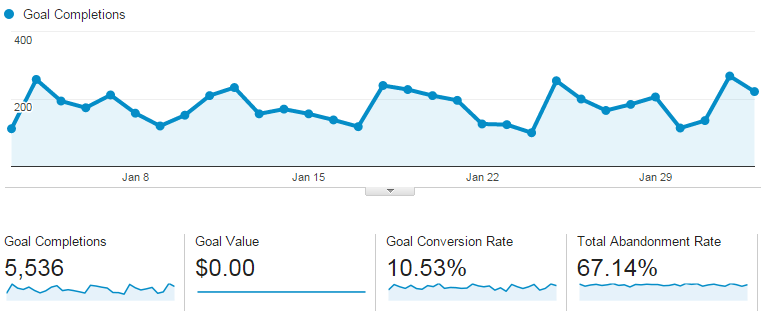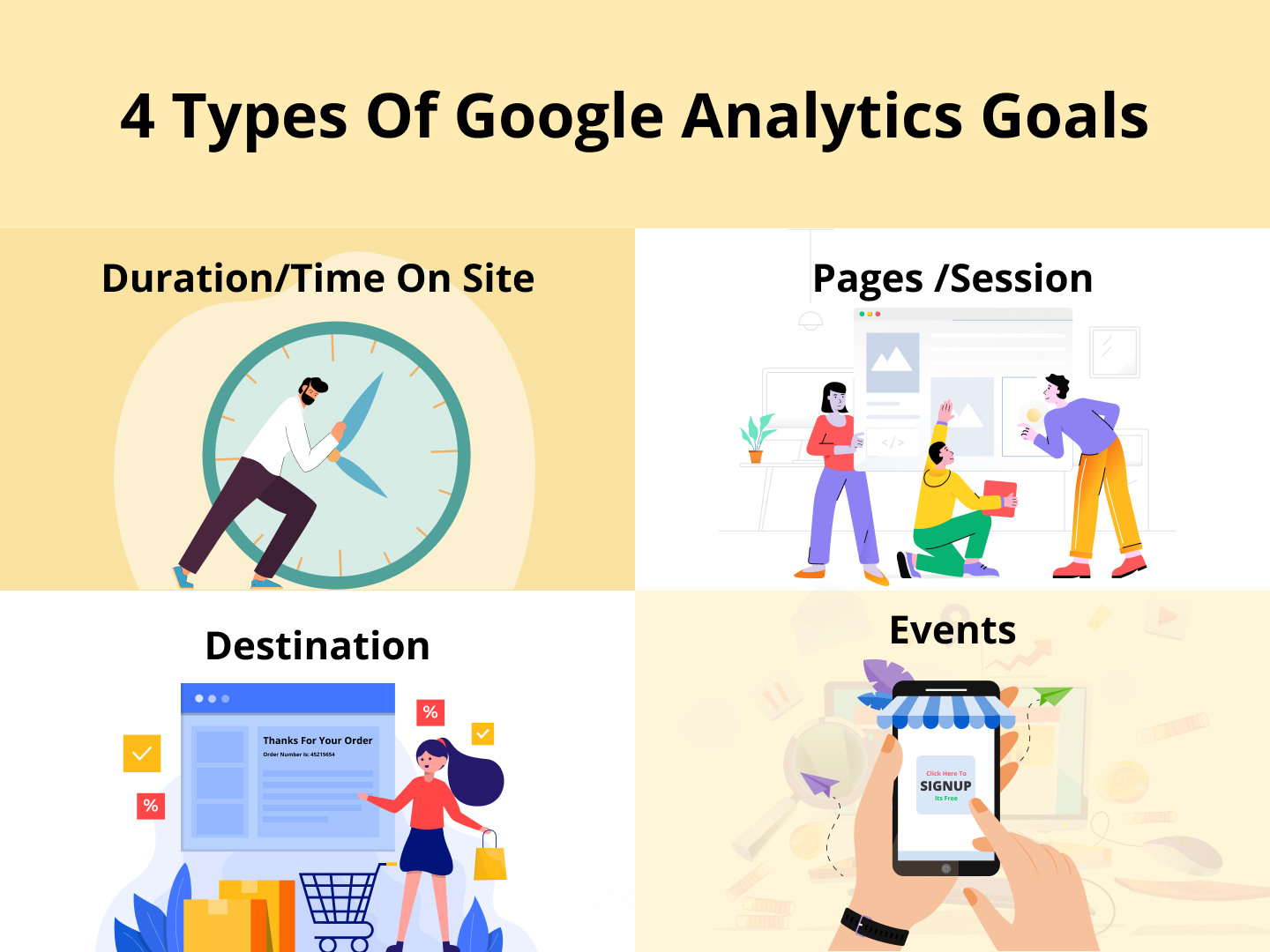What Data Is Google Analytics Goals Unable to Track and Why
Demystifying Google Analytics Limitations: Uncover What Data Goals Can not Track
In the realm of digital analytics, Google Analytics stands as an effective tool that supplies valuable understandings right into web site performance and individual actions. From the intricacies of individual communication with dynamic web content to the intricacies of cross-device individual trips, these limitations dropped light on locations that may continue to be obscured from typical analytics perspectives.

User Communication With Dynamic Content
Customer communication with vibrant web content plays an important function in comprehending customer actions on websites and enhancing the general individual experience. By tracking individual interactions with dynamic material, site owners can acquire useful insights into user engagement, preferences, and habits - what data is google analytics goals unable to track.
Google Analytics uses numerous devices to track customer communications with vibrant web content, such as occasion monitoring and virtual pageviews. Event monitoring permits you to check details individual actions, like clicking a button or watching a video clip, giving information on exactly how individuals interact with vibrant components. Online pageviews can be utilized to track interactions that do not bring about a brand-new page tons, providing a comprehensive view of customer involvement with vibrant web content. By analyzing this information, web site owners can make enlightened decisions to enhance customer experience and drive conversions.
Cross-Device Customer Journeys
Exactly how can modern-day analytics tools track the facility paths individuals take across numerous devices in their on-line journeys? Cross-device individual trips present a substantial challenge for tracking and assessing user habits accurately. As individuals connect with sites or applications utilizing numerous devices such as desktops, mobile phones, and tablet computers, it becomes crucial to understand exactly how they relocate in between these platforms to optimize customer experience successfully.
Google Analytics encounters restrictions in tracking cross-device user journeys due to privacy concerns and technical constraints - what data is google analytics goals unable to track. While it can provide understandings right into specific gadgets' communications, tracking a seamless individual journey across numerous tools continues to be a difficulty. This restriction can lead to insufficient data and fragmented user insights, making it hard for businesses to develop a unified sight of the customer trip
To resolve this problem, companies can utilize innovative analytics devices that provide cross-device tracking capacities, permitting them to acquire a more all natural understanding of individual habits. By leveraging these tools, organizations can connect the gap in tracking cross-device customer journeys and optimize their electronic techniques for a smooth individual experience.
Offline Conversions and Attribution
As organizations navigate the challenges of tracking cross-device customer journeys, an additional essential aspect to take into consideration is the realm of offline conversions and acknowledgment in the realm of information analytics. While Google Analytics supplies valuable understandings into on-line user actions, it fails when it comes to tracking conversions that take place offline. This limitation postures a considerable challenge for organizations that have both online and offline sales networks.
Offline conversions, such as purchases made in physical shops or through phone call facilities, check here are necessary to comprehending the full client trip. Without the capability to associate these offline conversions to details on the internet communications, companies might struggle to precisely gauge the impact of their digital advertising and marketing efforts.
To address this void, businesses can explore alternate remedies such as integrating CRM systems with on the internet analytics devices or making use of unique discount codes that can be mapped back to on-line campaigns. By linking the void between online and offline data, services can gain a more detailed understanding of their consumers' actions and improve their overall advertising methods.
Person Customer Identification
In the realm of data analytics, the capability to precisely recognize specific customers throughout various online touchpoints is an important obstacle for organizations looking for to individualize and optimize their marketing techniques. While Google Analytics supplies useful understandings right into customer actions and communications, it drops short in allowing the recognition of certain More about the author people as a result of privacy problems and technological limitations. Google Analytics uses unique identifiers such as cookies to track individual sessions and actions, but these do not equate to identifying specific users in an individual sense.

Information From Secure Pages
In visit homepage spite of the raising occurrence of secure web pages on websites, acquiring data from these encrypted sources offers a special obstacle for digital analytics systems like Google Analytics. Secure web pages, indicated by HTTPS in the link, encrypt data traded between the individual's internet browser and the site's web server to ensure personal privacy and security. While this file encryption is essential for safeguarding delicate details, it also presents constraints for tracking individual actions and gathering analytics data.
Google Analytics deals with barriers in collecting comprehensive details from secure pages because of the security protocols in position. As an outcome, certain data points such as recommendation resources, keyword searches, and also some customer interactions may not be completely caught when customers access an internet site with a secure link. This restriction can influence the accuracy and efficiency of the data analysis, resulting in spaces in recognizing customer actions and choices on secure pages.
To navigate this challenge, electronic experts might need to explore alternative tracking methods or leverage various other devices especially made to collect understandings from safe and secure web pages. By adjusting methods to fit these restrictions, services can still obtain useful analytics in spite of the restrictions provided by encrypted connections.
Conclusion
Finally, Google Analytics has limitations in tracking user communication with vibrant web content, cross-device customer trips, offline conversions, private user identification, and information from safe and secure web pages. These limitations hinder an extensive understanding of user behavior and might cause spaces in data evaluation. Regardless of its beneficial insights, Google Analytics may not offer a complete picture of user involvement across numerous touchpoints. It is crucial for services to be familiar with these restrictions and think about auxiliary devices for a more holistic sight of their data.
Individual communication with dynamic web content plays a crucial function in understanding individual actions on sites and maximizing the overall individual experience. By tracking user interactions with vibrant web content, site proprietors can obtain beneficial insights into customer engagement, preferences, and habits.
Google Analytics makes use of unique identifiers such as cookies to track individual sessions and habits, yet these do not equate to determining private customers in an individual sense.
As a result, specific data factors such as recommendation resources, keyword searches, and also some customer interactions may not be completely recorded when users access a site via a secure connection.In conclusion, Google Analytics has restrictions in tracking user interaction with dynamic material, cross-device individual trips, offline conversions, specific customer recognition, and information from secure pages.